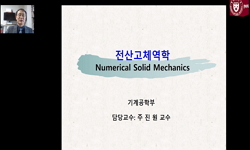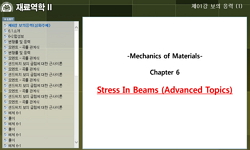<P><B>Abstract</B></P> <P>In the research presented in this paper, a slip line-based model is proposed for the estimation of both radial and axial force in the radial-axial ring rolling (RARR) process. Based on the shape...
http://chineseinput.net/에서 pinyin(병음)방식으로 중국어를 변환할 수 있습니다.
변환된 중국어를 복사하여 사용하시면 됩니다.
- 中文 을 입력하시려면 zhongwen을 입력하시고 space를누르시면됩니다.
- 北京 을 입력하시려면 beijing을 입력하시고 space를 누르시면 됩니다.
https://www.riss.kr/link?id=A107461835
- 저자
- 발행기관
- 학술지명
- 권호사항
-
발행연도
2018
-
작성언어
-
- 주제어
-
등재정보
SCI,SCIE,SCOPUS
-
자료형태
학술저널
-
수록면
17-33(17쪽)
- 제공처
-
0
상세조회 -
0
다운로드
부가정보
다국어 초록 (Multilingual Abstract)
<P><B>Abstract</B></P> <P>In the research presented in this paper, a slip line-based model is proposed for the estimation of both radial and axial force in the radial-axial ring rolling (RARR) process. Based on the shape of the contact arcs between ring and tools in the two deformation gaps present in the ring rolling process, a recursive algorithm for the calculation of the two slip line fields starting from the two pairs of opposite tools is derived and implemented in a commercial spreadsheet software (MS Excel). By considering the stress boundary conditions applied to the portion of material undergoing the deformation, both for the radial and axial deformation gaps, the pressure factors those make the two slip line fields starting from the two opposite tools to intersect are calculated and utilized for the estimation of radial and axial forces, for each round of the process. The developed model has been validated by cross-comparing its results with those of laboratory experiment and numerical simulation. For the validation study case, the average deviations, in comparison to the experimental results, are calculated in 1.86% and 4.55% for the slip line force model whereas in 6.86% and 0.88% for the numerical simulation, for the radial and axial forces respectively. The proposed slip line model has been also utilized for the estimation of radial and axial forming forces of nine different study cases of flat rings having the outer diameter ranging from 800 mm to 2000 mm, observing a maximum deviation, in comparison to the relevant FEM simulation, of 4.92% (radial force) and 5.88% (axial force). The developed slip line force model allows estimating almost in real time and with a reasonable accuracy the process forces and, for this reason, it may be of interest for both industrial and academic researchers dealing with the set-up and control of the radial-axial ring rolling process.</P> <P><B>Highlights</B></P> <P> <UL> <LI> Development of analytical slip line field construction algorithm. </LI> <LI> Slip line algorithm implementation and boundary conditions calculation procedure. </LI> <LI> Radial and axial force calculation in the ring rolling process. </LI> <LI> Model validation by comparison with experimental and numerical results. </LI> </UL> </P> <P><B>Graphical abstract</B></P> <P>[DISPLAY OMISSION]</P>







 ScienceON
ScienceON






